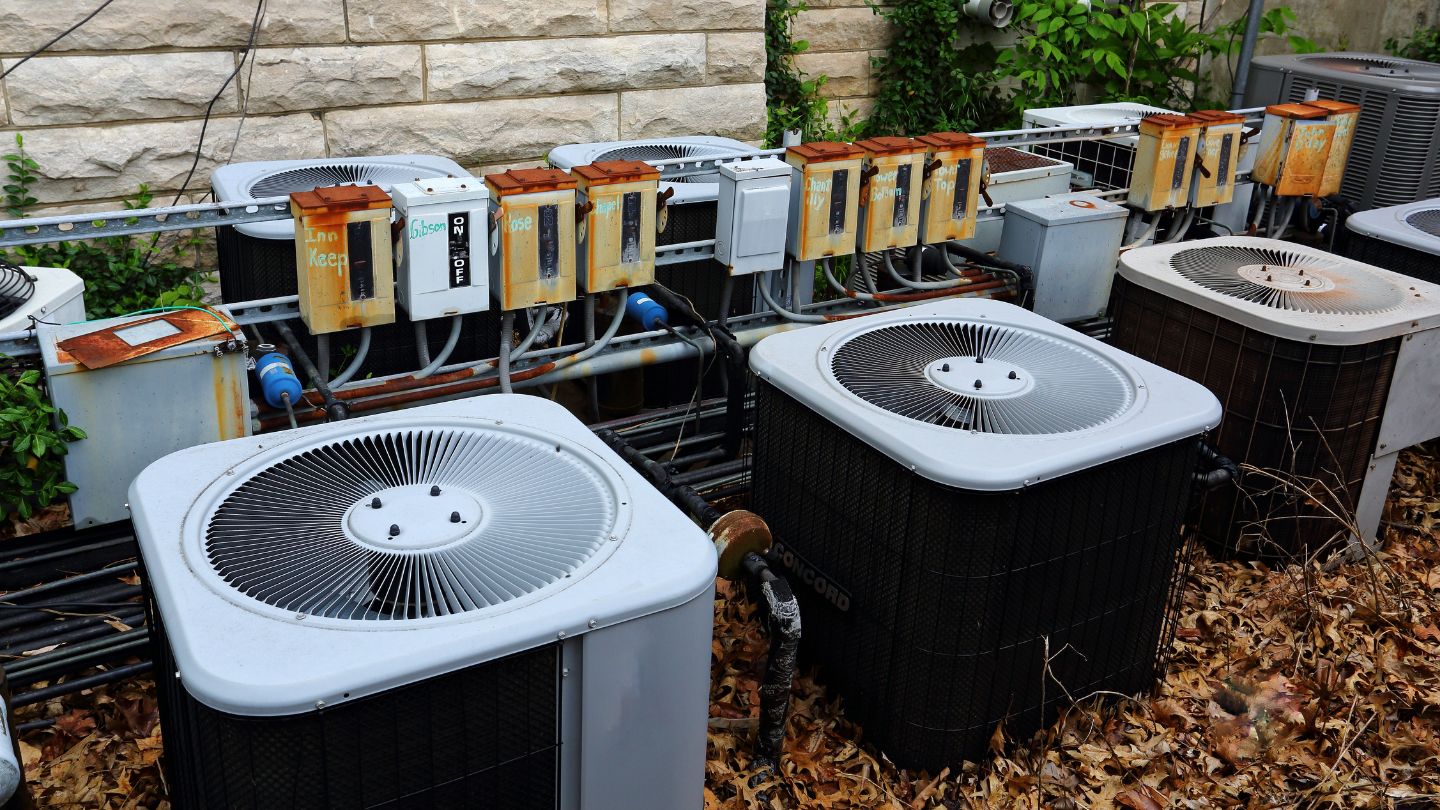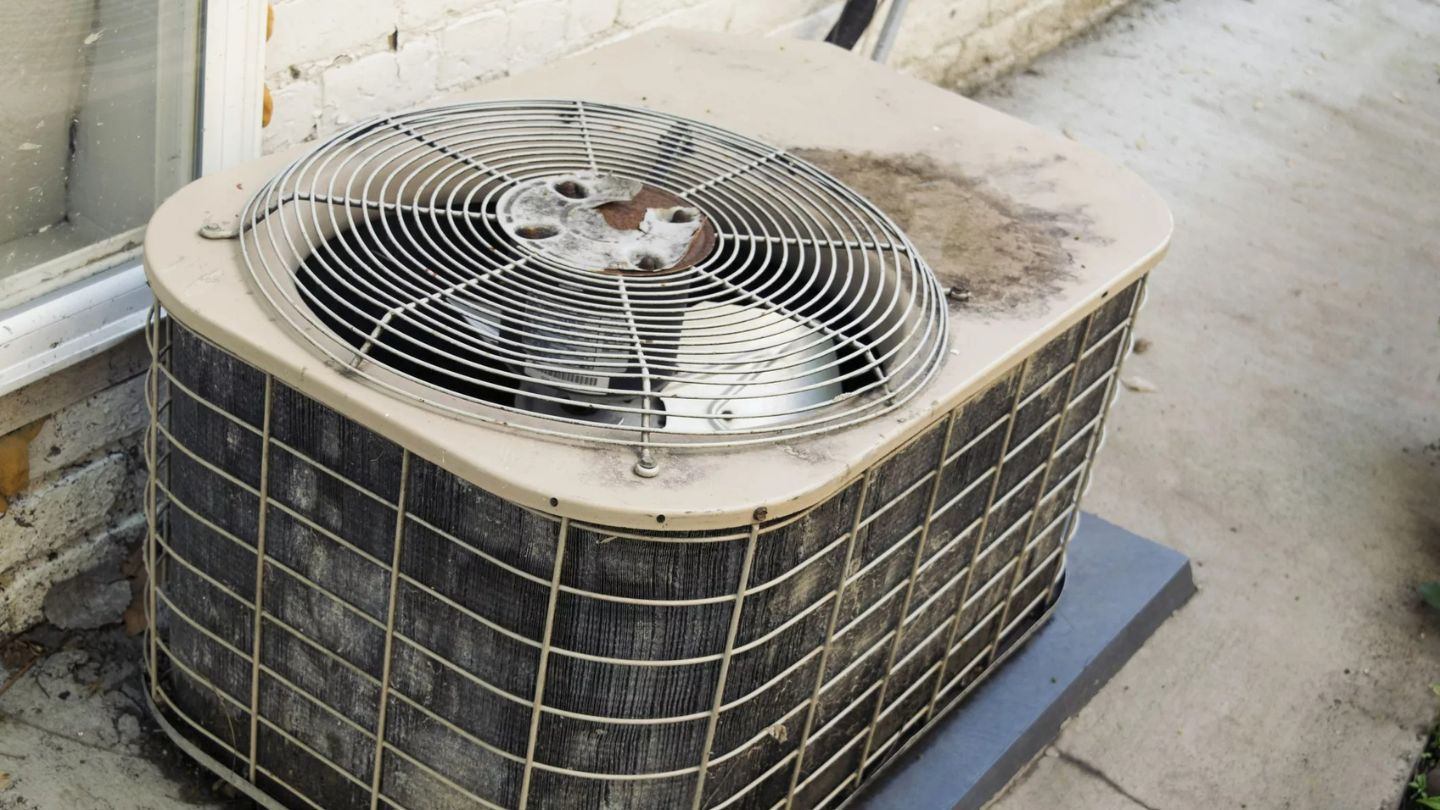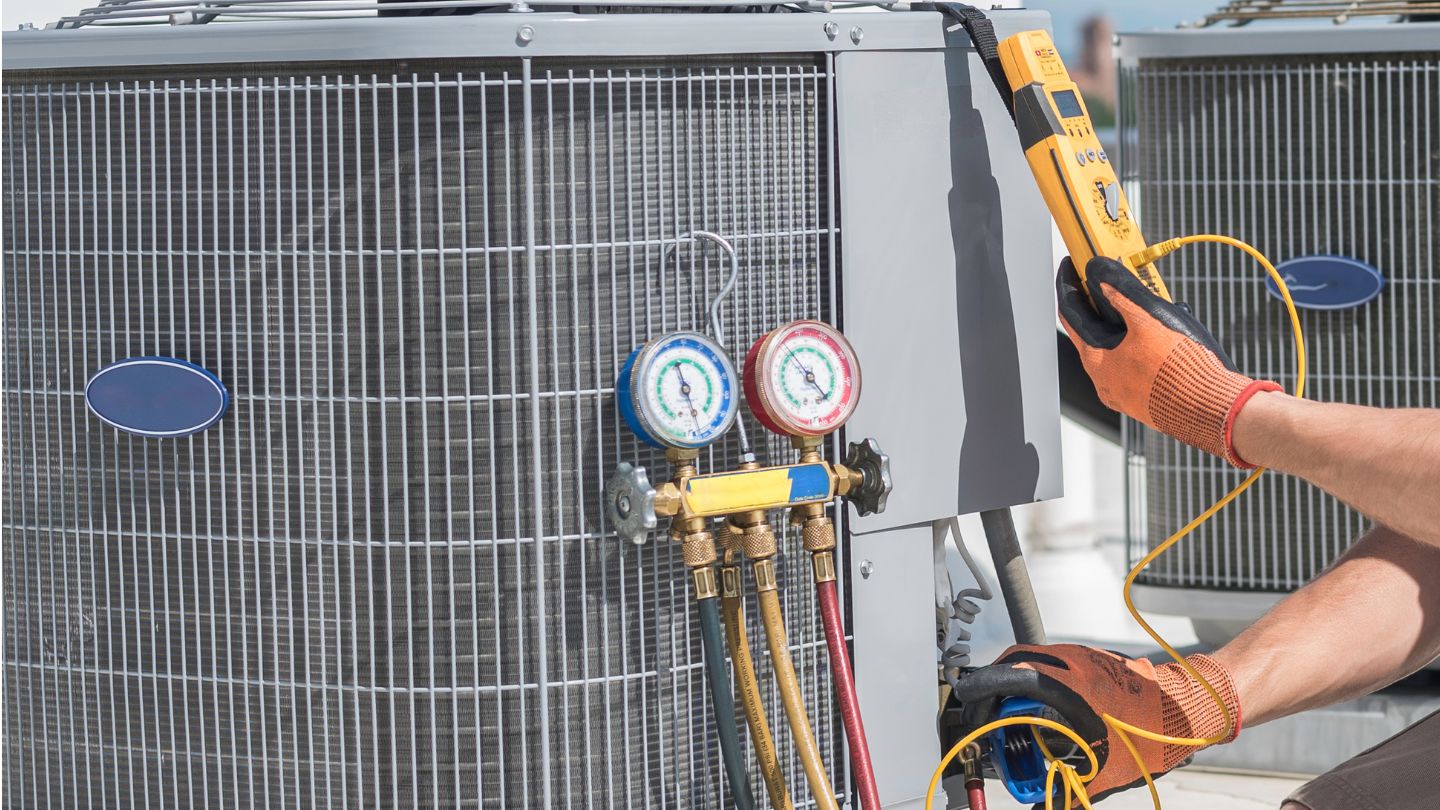How Long Does It Take to Replace AC Unit? Quick & Clear Guide
Replacing an AC unit typically takes between 4 hours to a full day, depending on complexity. Factors like the type of unit, home size, and accessibility can impact the time needed. So, how long does it take to replace an AC unit? In this guide, we’ll break down the timeline and what influences it, helping you set realistic expectations.
Key Takeaways
- The time to replace an AC unit varies based on factors like unit type, home size, layout, and accessibility, usually taking between 4 to 8 hours.
- Preparation is key; clearing the area around the unit and coordinating with the HVAC contractor can minimize delays during installation.
- Post-installation, regular maintenance, and energy efficiency practices are essential to extend the lifespan of your new AC unit and optimize performance.
Factors Influencing AC Unit Replacement Time
Beforehand, multiple elements play a role in determining the duration required to substitute an air conditioning unit. Aspects such as the category of the AC unit being installed, its dimensions, and your house’s architectural design contribute to how quickly the replacement can be done. The initial system configuration, along with specific requirements for installation, also have substantial effects on the timeframe needed for this exchange.
Subsequently, various factors impact how long it will take to replace an air conditioning unit.
- Type of AC Unit
- Size of Air Conditioning System
- Home Layout
- Current System Configuration
- Particulars regarding Installation
These points may greatly influence how quickly a replacement could proceed.
Both where your AC unit is situated and its ease of accessibility are factors that might alter the length of time needed to replace it properly. Understanding these aspects aids you in better preparation and aligning realistic timelines concerning completion times throughout the installation process.
Let us start by evaluating what sort of air conditioning system is under consideration.
Type of AC Unit
The size and layout of a home significantly affect how long it takes to install a new AC unit. Larger homes typically require more powerful HVAC systems, often involving additional indoor air handlers or larger ductwork, which can increase installation time. Homes with expansive floor plans may also need zoned cooling systems or adjustments to airflow pathways.
Additionally, multi-story homes or properties with limited attic or crawlspace access may require custom modifications during installation. These layout-related challenges not only affect labor intensity but also impact how efficiently technicians can complete the job. A well-prepared evaluation of your home’s size and configuration allows HVAC professionals to plan appropriately and minimize disruptions.
Home Size and Layout
Your home’s size and configuration are crucial determinants of how long it will take to install your new AC unit. Homes with greater square footage often necessitate an extended installation period, as they typically require larger or multiple units to ensure efficient cooling throughout the space. The length of time can be Increased if the layout demands significant ductwork modifications or the addition of numerous components.
More substantial AC systems require additional labor for setting up line sets and establishing refrigerant connections, which contributes to a longer setup time. Intricate layouts in homes may pose extra challenges that need to be addressed during installation, like resolving electrical problems or altering existing ductwork, thereby adding complexity and potentially prolonging the process.
Accessibility and Location
Accessibility and unit location are critical to how efficiently an AC system can be installed. Units placed in hard-to-reach areas, such as tight attics or rooftops, often require additional time and safety measures. Technicians may need special equipment or more labor to transport and position units correctly.
Conversely, if your existing HVAC setup is easily accessible and has up-to-date ductwork and wiring, technicians can often complete the installation more quickly. HVAC professionals evaluate these site-specific factors in advance to coordinate logistics and avoid delays. This preparation ensures the installation process is as smooth and efficient as possible.
Typical Timeline for Replacing an AC Unit

The duration required for the replacement of an air conditioning unit can vary greatly and is contingent on various elements. On average, it encompasses a complete day’s work to execute the removal of the old system, install the new one, and carry out all necessary testing. If suitable wiring and ductwork are already in place, the process can be dramatically sped up by lessening installation time.
Ordinarily, you might expect that swapping out an air conditioning unit will take anywhere from 4 hours to an entire day. This range accounts for both straightforward jobs as well as those that may present additional complexity or unexpected obstacles.
To understand better what’s involved in this procedure, let’s delve into typical durations needed for replacements along with factors that could cause potential delays.
Standard Replacement Time
Replacing an air conditioning unit is usually a quick process, with the average installation time ranging from 4 to 8 hours. This duration encompasses taking out the old unit, setting up the new one, and performing preliminary tests to verify that it operates properly.
Still, this timing is just a rough estimate and can change depending on various factors specific to each situation. Typically, though, homeowners may anticipate that the entire process will be finished in under a day, thereby reducing any inconvenience caused by downtime.
Common Delays
Even with diligent efforts, a variety of elements might extend the duration needed to replace an AC unit. Installation sites that are more complex due to prerequisites for ductwork adjustments can add time to the replacement timeline. The extent of preparatory tasks required at a location can have substantial variations, impacting how long it takes to complete installation.
Typical postponements arise from steps like detaching and connecting new wiring systems to heating units. These additional requirements contribute towards lengthening the timeframe necessary for swapping out old equipment. Residences equipped with multiple air conditioning units will require more time for installations compared to abodes outfitted with just one device.
In scenarios where a central air setup is being introduced in the absence of pre-existing channels for airflow distribution, setting up such systems could span over two days or possibly longer. These anticipated hold-ups emphasize why extensive strategic planning and groundwork are essential components in streamlining this process.
Read more: Common ac installation mistakes to avoid
Preparation Steps Before Replacement
Prior to initiating the installation process, homeowners must undertake a series of preparatory measures for a seamless and effective AC replacement. It’s essential to carry out an initial inspection before the installation to confirm that the space surrounding the AC unit is conducive to optimal airflow and provides sufficient clearance. Setting up electrical connections demands meticulous consideration so they align with both the house’s existing wiring framework and the specifications of your new air conditioning system.
Thorough groundwork can help avoid postponements and facilitate a fluid transition during installation. Next, we will delve into detail how you should clear any obstructions around your unit while collaborating efficiently with your HVAC professional for this endeavor.
Clearing the Area
Before installation day, HVAC professionals will assess the area around your existing AC system to ensure it allows for safe, unobstructed access. Rather than homeowners needing to do any major clearing, technicians handle the preparation by moving or protecting any items near the workspace. This includes ensuring that the outdoor condenser has adequate clearance on all sides and sits on a level base.
If adjustments are required—such as trimming back landscaping or modifying the pad on which the unit rests—these are handled by the installation team as part of the service. Technicians also make sure the area meets airflow and code compliance requirements, optimizing the environment for long-term performance and maintenance accessibility.
Scheduling and Coordination
Proper scheduling and coordination are essential to the success of an AC replacement. HVAC providers work with homeowners to establish a convenient timeline that aligns with both availability and system readiness. During the consultation phase, professionals assess your current system and site conditions to estimate the time and resources required for the job.
Effective communication between homeowners and the HVAC team helps streamline the process. This includes confirming equipment delivery timelines, electrical readiness, and any necessary permits. Coordinated planning helps avoid rescheduling issues and ensures all elements are in place before installation begins, reducing potential delays.
The Replacement Process

Replacing an AC unit is a multi-step procedure essential for the optimal functioning of the new system. HVAC experts facilitate this installation, optimizing efficiency and reducing any disruptions in service. It’s important that homeowners make room around the setup location and relocate personal belongings prior to the installation day.
This process can be segmented into three primary phases: taking out the old unit, fitting in the new one, and conducting comprehensive testing and calibration as part of a full system replacement. Being familiar with these stages will help you get ready for what lies ahead when it comes time to install your AC unit.
Removal of Old Unit
Initiating the replacement procedure, technicians focus on safely detaching the existing air conditioning unit. They start by sealing off the refrigerant lines to avert any leaks and guarantee safety measures are in place. During this phase, precautions such as draping coverings over floors and furnishings are implemented to shield them from potential harm while extracting the old unit.
Subsequent to the careful extraction of the old air conditioner, preparations begin for installing the new air conditioning system. This preparation might necessitate alterations or complete removal of the current ductwork associated with the former air conditioner so that it aligns seamlessly with the requirements of the new setup.
Installation of New Unit
Installing the new air conditioning system is a detailed, multi-phase process. Technicians begin by securing the outdoor unit and connecting it to the indoor components via refrigerant lines and electrical wiring. These connections must be precisely calibrated to ensure efficiency, safety, and regulatory compliance.
During the setup, licensed HVAC professionals will pressure test the line set using nitrogen and verify that all joints are properly sealed. They also connect the system to the home’s ductwork, ensuring each junction is airtight to maintain energy efficiency. Any required updates to drainage, wiring, or support structures are completed during this phase, and all work is performed to meet local building codes.
Read more: Clear signs it’s time for a new air conditioner
System Testing and Calibration
Once the new AC unit is installed, HVAC technicians initiate a comprehensive system test. This includes running the unit for a set period—usually about 20 minutes—to observe its startup cycle, cooling output, and airflow consistency. During this time, they check refrigerant levels, test for leaks, and ensure that the thermostat accurately communicates with the system.
In addition to these basic tests, technicians evaluate duct pressure, inspect air balance throughout the home, and calibrate system settings to optimize energy use. These professional-grade diagnostics help verify that your new unit is functioning within the manufacturer’s specifications and is ready for long-term performance.
Read more: Why Is My AC Dripping Water?
Post-Installation Best Practices

Ensuring that you adhere to optimal maintenance procedures is vital for the sustained operation and effectiveness of your newly installed air conditioning unit. Performing routine maintenance not only bolsters the system’s functionality and longevity but also diminishes the likelihood of malfunctions. It is essential to correctly insulate refrigerant lines, as well as keep both indoor and outdoor units clean, in order to maintain ideal airflow and maximize energy efficiency.
Conducting regular checks for calibration fine-tunes your air conditioning system’s operational proficiency, guaranteeing steady temperature regulation within your dwelling space. By committing to these recommended practices, you will fully benefit from all that your new air conditioning setup has to offer.
Regular Maintenance
Routine professional maintenance plays a vital role in preserving the performance and lifespan of your AC system. HVAC service providers recommend scheduled inspections—typically twice a year—to identify issues before they become costly breakdowns. These checkups include inspecting electrical connections, testing capacitors, evaluating airflow, and measuring refrigerant levels.
Rather than relying on homeowners to clean or adjust system components, licensed technicians handle tasks like cleaning condenser coils, checking for corrosion, and replacing worn parts. Proactive maintenance not only ensures optimal cooling but also protects your investment by minimizing the risk of emergency repairs and improving system efficiency.
Read more: Top 9 benefits of a maintenance for your home
Energy Efficiency Tips
Improving your air conditioning system’s energy efficiency is best achieved through professional servicing and strategic upgrades. HVAC specialists can evaluate your home for insulation gaps, duct leakage, and ventilation issues that may impact cooling performance. Technicians also verify that refrigerant lines are properly insulated and that all seals within the system are intact.
If your existing thermostat is outdated, your HVAC provider may recommend upgrading to a programmable or smart thermostat to optimize temperature control and energy savings. Additionally, professional cleaning of evaporator coils and blower components can restore lost efficiency. These expert measures help lower utility costs while maintaining peak system output.
Read more: How To Make Your HVAC More Energy-Efficient
Summary
In conclusion, replacing an AC unit requires meticulous planning, technical expertise, and ongoing support to ensure lasting comfort and reliability. Understanding the factors that affect installation time and maintaining your system for optimal efficiency and performance are vital steps in a successful replacement.
At Total Comfort Cooling & Heating Inc., we specialize in providing top-tier HVAC solutions and AC repair in Port Charlotte. Whether you’re upgrading an old system or need an urgent replacement, our experienced team guarantees a seamless, efficient, and professionally managed installation. Contact us today to schedule your AC replacement and discover the comfort you deserve.
Frequently Asked Questions
Is it better to replace the AC unit in the off-season?
Yes, replacing an AC unit during fall or early spring can offer better availability, faster scheduling, and potential cost savings due to lower demand.
Will my ductwork need to be replaced with a new AC unit?
Not always. If your existing ductwork is in good shape and properly sized, it can often be reused, but it should be inspected for leaks or inefficiencies.
Can I stay home during the AC installation?
Yes, most homeowners stay home during the process. Just ensure the technicians have clear access to the work areas inside and outside.
READY FOR YOUR NEXT HEATING OR COOLING PROJECT?
Contact us to get a quote and see why our customer service is recognized as the best in the industry.







 Special Offer: 12 Months - No Interest, No Payments!
Special Offer: 12 Months - No Interest, No Payments!